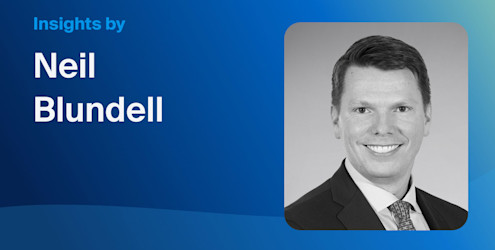Structured notes can serve as a multi-tool to target various investment objectives.
Structured notes, also known as structured investments, are on the rise as financial advisors aim to increase returns while also aiming to mitigate risk across their clients’ portfolios. Structured notes are not necessarily an asset class, but rather are senior unsecured debt obligations of an issuer, which are typically constructed of a zero-coupon bond with an options package along with built-in origination costs to create a single security. Structured notes seek to enable investors to achieve a defined payout that may be linked to an index, a stock or even the price of gold. Structured notes can provide exposure to public markets in a protected or leveraged way, typically linked to underlying assets, such as currencies, interest rates, and market indices. Notes may target objectives such as yield, growth, and/or protection, aiming to bridge portfolio gaps with a lower barrier to entry.
According to a recent CAIS-Mercer survey of more than 250 independent financial advisors, nearly one-third of respondents currently allocate to structured notes, with a quarter planning to increase their allocations in the next year. The trend is on track to continue given the market’s growth and the versatility and flexibility of structured notes—in the last three years alone, total U.S. structured notes volume issuance grew over 68% to an estimated $130B in 2023.
History of Structured Investments
Investors in the European and Asian markets were leaders in the issuance of structured notes beginning in the 1980s. By the 1990s, it spread to the U.S. as financial institutions sought innovative ways to meet investor demand for customizable investment strategies. Historically, these strategies were adopted primarily by institutional investors and high-net-worth individuals. However, structured notes have since become more accessible to the independent wealth channel as technology has made it easier for financial advisors to access these strategies and allocate them to client portfolios.
Adoption of these investment vehicles is still low among advisors in the US compared to the European and Asian markets, and there is significant growth. The first step for advisor adoption of structured notes is to help them understand how the strategy can benefit clients and educate them on the applicable risks.
Unpacking Structured Investments
Structured notes can serve as a multi-tool to target various investment objectives.
They can generally be broken down into three broader product categories focused on growth, yield and protection. Within these categories, advisors can select specific offerings from issuing banks that target their desired market exposure, downside protection, upside potential and time to maturity. Alternatively, advisors can instead seek to work with issuing banks to customize and tailor a structured note to help meet their client’s specific investment objectives, address their risk-reward profile and express their market views. Structured notes can be at the core of defined outcome investing, potentially enabling the advisor to play offense and defense in the markets.
Structured Investments in Portfolios
As some advisors look beyond the traditional 60/40 portfolio, they may consider implementing structured notes as a differentiator in their practice to attract new clients and gain more wallet share with their existing clients.
Advisors tend to view structured notes in one of three ways—as part of the alternatives sleeve, as a complement to their clients’ core bond fixed income allocation or to hedge their equities positions.
For advisors new to alternatives, structured notes can serve as a gateway into the space due to increased accessibility with lower investment minimums and lack of accreditation requirements. For advisors already utilizing alternatives in their clients’ portfolios, structured notes may complement their fund allocations and further bridge portfolio gaps.
Additionally, rather than purchasing a single position, advisors may consider laddering structured notes by building out a strategy over time. By laddering structured notes, advisors can aim to address concerns about market volatility by hedging timing risk, the underlying asset, and the reinvestment risk as money comes due at various points in time.
More recently, structured note separately managed accounts are gaining popularity due to their professional management, potential for institutional pricing and alleviated operational burdens.
Additionally, advisors have recognized that when alternative funds and structured notes are paired in tandem in a client’s portfolio, an advisor can access both public and private markets. Structured notes offer more customizability when compared to alternative fund investments, thus offering advisors the ability to solve for more specific investment goals.
Key Risk Considerations for Structured Investments
Before investing in structured notes, it is important to understand their inherent risks and consider some of the implications when holding note positions.
As a general matter, structured notes carry certain investment risks including, but not limited to, market risk, complexity, illiquidity, call risk and credit risk.
For example, since structured notes are generally unsecured debt obligations of an issuer, any payment or delivery to be made on a structured note, including any repayment of principal, depends on the creditworthiness and ability of the issuer to satisfy its obligations. Because structured notes are tied to the performance of an underlying asset, the value of the note may increase or decrease due to market factors such as volatility, interest rates, and economic or political changes, and investors may lose a significant portion or all their initial investment. Some notes have a call feature which means if a note is called early, there is no guarantee that the investor will be able to reinvest the proceeds at the same rate of return.
Looking Ahead
With over eight in 10 financial advisors expecting to increase allocations to alts by 2025, structured notes are likely to increase in popularity. In recent conversations with advisors, many have increasingly pointed to the relationship emerging between funds and notes—with complementary objectives such as yield, growth or protection, notes may be considered alongside alternative funds and help bridge portfolio gaps with a lower barrier to entry.
If you are not educating your clients on structured notes, someone else is. Advisors can be well-positioned to reap the potential benefits of these strategies by doing research and understanding how they may fit into certain client portfolios.
This article was originally published on wealthmanagement.com.





